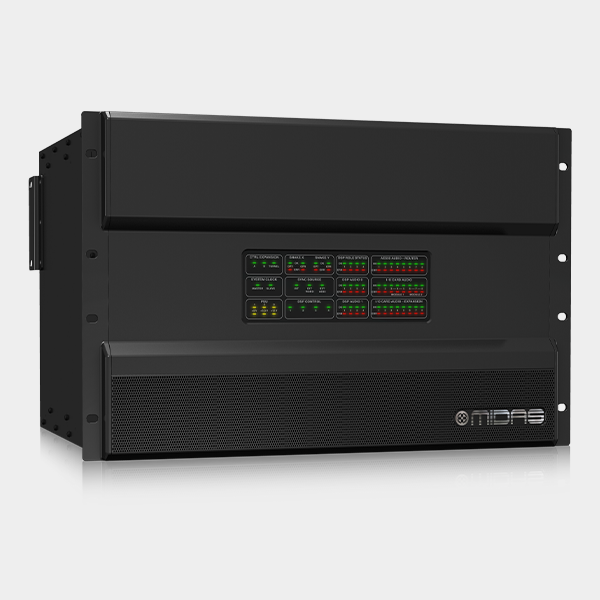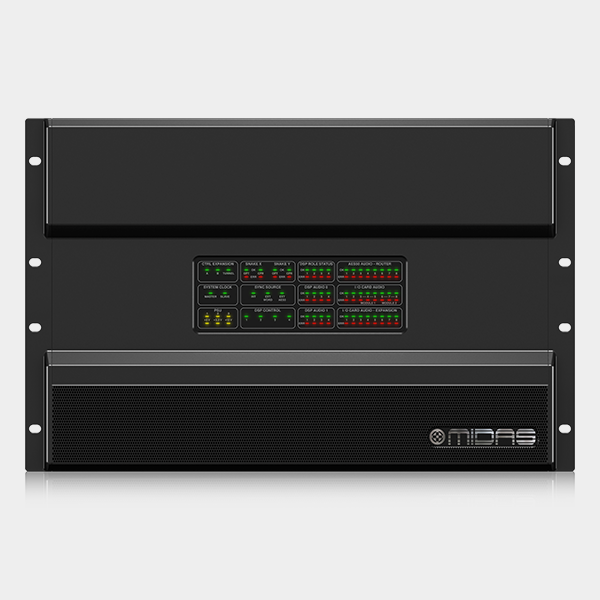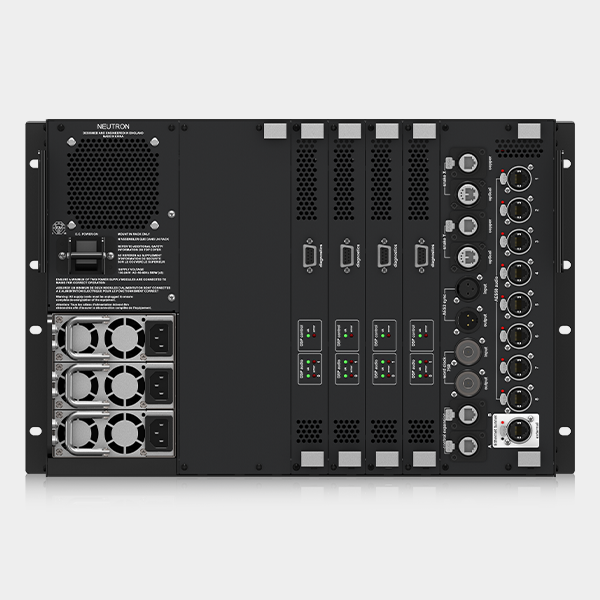Product Details
The powerhouse at the centre of the PRO X system, the new NEUTRON High Performance Audio System Engine is the result of a three year research and development program that pushed the Midas engineering team well beyond their already considerable expertise and knowledge.
NEUTRON’s cutting-edge, latest generation DSPs and high-performance FPGA (Field-Programmable Gate Array) technology, coupled with a highly efficient MIMD (Multiple Instruction, Multiple Data) architecture, delivers more than 100 Gigaflops of real-time audio processing. With the capability to handle up to 168 simultaneous input channels and 99 time-aligned and phase-coherent output mix buses, NEUTRON represents the state-of-the-art in digital audio mixing technology.
HyperMAC and AES50 audio networking technologies allow up to 288 inputs and 294 outputs at 96 kHz sampling frequency combined with 40 bit floating point processing precision, which can be dynamically assigned to the PRO X’s input channels and bus outputs on a dynamic scene-by-scene basis. This high level of connectivity, coupled with the large channel and bus counts, make the PRO X and NEUTRON equally at home in theatres and symphony halls as it is in live concert touring, outside broadcast and music festivals.
Digital Audio Networking
SuperMAC (AES50-Compliant) and HyperMAC digital audio networking technologies from Klark Teknik simultaneously provide high channel counts, ultra low and deterministic latencies, sample-synchronous and phase-aligned networked clock distribution, error detection, network redundancy, and ease of deployment and use – to meet the demanding requirements of live concert touring.
The NEUTRON HyperMAC router provides a dual redundant snake connection to the PRO X Control Centre over optical fibre and copper with a bandwidth of 192 bidirectional channels of 96 kHz 24 bit digital audio, up to a distance of 500 m with optical fibre or 100 m with CAT5/5e cable.
NEUTRON is compatible with all Midas digital I/O units, as well as with any other AES50- equipped devices. Multiple consoles can be connected together to create either larger mixing systems, or multiple discrete mixing consoles can share a common resource of networked and distributed I/O interfaces.
40 Bit Floating Point Processing
NEUTRON can simultaneously process up to 24 internal multi-channel effects and its 40 bit floating-point audio processing hosts a wide choice of virtual effects devices, which range from dual-mono delay units, stereo modulation and numerous diverse reverberation simulations, multi-band compression, dynamic EQ and multi-channel dual-function dynamics processing. Up to 36 1⁄3 octave Klark Teknik DN370 Graphic Equalisers (GEQs) are provided, which can be patched into any output.
The oversampled digital signal processing algorithms, combined with the fully interpolated and touch sensitive user controls, result in the smooth continuous response and immediacy of working on an analogue console. Parameter adjustment becomes fast and easy, and the continuous phase shift of a swept frequency control is heard without the quantisation artefacts exhibited by competing digital consoles.
NEUTRON provides comprehensive automatic latency management of all internal routing and processing delays – and also includes compensation for external analogue inserts. All audio samples are synchronised before summing, resulting in absolute phase coherence at the outputs, without the comb filtering effects of competing products that often result in specific frequencies being cancelled out completely.
All effects processors and GEQs are custom-designed to function within this automatic latency compensation system. This ensures a phase-coherent, sample-accurate mix regardless of whether the devices are used as channel inserts or on auxiliary buses.



